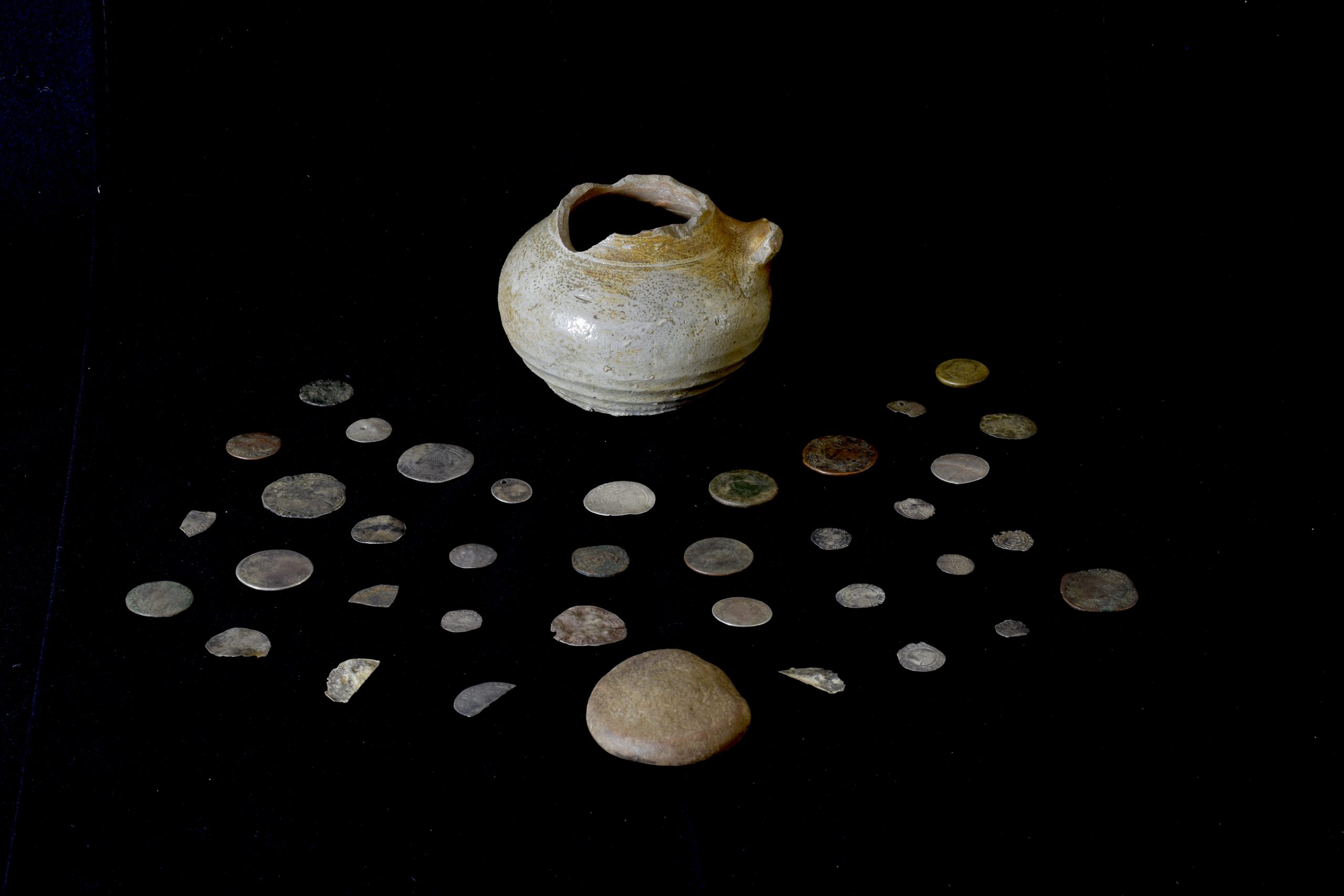They were hidden for safekeeping underneath a stone fireplace more than 300 years ago.
But now archaeologists have revealed that a hoard of coins found earlier this year may have been put there by a victim of the infamous Massacre of Glencoe.
The 36 coins, which vary in date, were discovered by archaeology student Lucy Ankers in the grand fireplace of the Glencoe house during a dig in August.
The coins were found in a pot, with a small rounded pebble for a lid and hidden beneath a hearth stone stab.
But none of the coins were minted after the 1680s which has led archaeologists to suggest they were most likely deposited under the fireplace either just before or during the 1692 Glencoe Massacre for safekeeping.
Whoever buried the coins did not return them, which could indicate that they were among the victims of the massacre.
Almost 40 members of Clan MacDonald of Glencoe were killed in February 1692 by soldiers acting on the orders of the British government.
‘As a first experience of a dig, Glencoe was amazing,’ Lucy said.
‘The two weeks I spent digging solidified that I want to pursue a career within archaeology.
‘I wasn’t expecting such an exciting find as one of my firsts, and I don’t think I will ever beat the feeling of seeing the coins peeking out of the dirt in the pot.’

Credit: Gareth Beale
The MacDonalds took part in the first Jacobite rising of 1689, this resulted in the clan being targeted in the 1692 Massacre of Glencoe.
In late January 1692, two companies or approximately 120 men from the Earl of Argyll’s Regiment of Foot arrived in Glencoe from Invergarry.
Their commander was Robert Campbell of Glenlyon.
An estimated 38 members and associates of Clan MacDonald of Glencoe were killed on 13 February 1692, including Maclain and his wife.
‘These exciting finds give us a rare glimpse of a single, dramatic event,’ said Dr Michael Given from Glasgow University.
‘Here’s what seems an ordinary rural house, but it has a grand fireplace, impressive floor slabs, and exotic pottery imported from the Netherlands and Germany.
‘And they’ve gathered up an amazing collection of coins in a little pot and buried them under the fireplace.
‘What’s really exciting is that these coins are no later than the 1680s: so were they buried in a rush as the Massacre started first thing in the morning of the 13th February 1692?
‘We know some of the survivors ran through the blizzard and escaped up the side glens, including this one: were these coins witnesses to this dramatic story?
‘It’s a real privilege, as archaeologists, to hold in our hands these objects that were so much part of people’s lives in the past.’
Excavations led by the University of Glasgow indicate that the ‘summerhouse’ was a hunting lodge and feasting hall used by the MacDonald chiefs in the 17th century to entertain, host hunts and gather their people to dispense justice.
Artefacts uncovered included high status pottery, evidence of leather and glass working, and the pot of silver and bronze coins.
The pot, containing 36 silver and bronze coins, discovered by Lucy Ankers includes coins dating from the late 1500s through to the 1680s, including pieces from the reigns of Elizabeth I, James VI and I, Charles I, the Cromwellian Commonwealth, and Charles II.
Interestingly, there were also coins from France and the Spanish Netherlands represented within the collection, as well as one coin which appears to have originated in the Papal States.
Read more on Scottish Field’s News pages.
Plus, don’t miss the November issue of Scottish Field magazine.
TAGS

